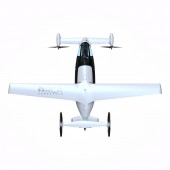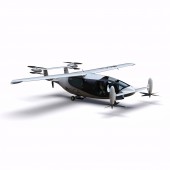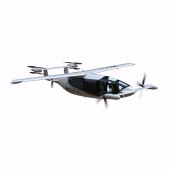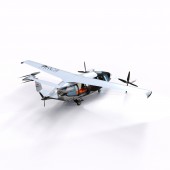Orca eVTOL Emergency Medical Aircraft by Soma Varga, Zsolt Koltai and Akos Matyus |
Home > Winners > #112394 |
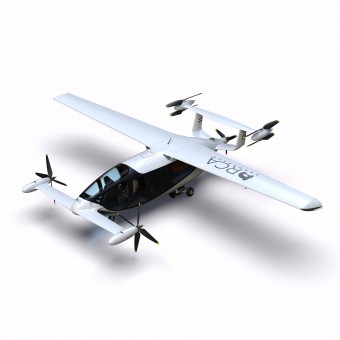 |
|
||||
| DESIGN DETAILS | |||||
| DESIGN NAME: Orca eVTOL PRIMARY FUNCTION: Emergency Medical Aircraft INSPIRATION: The concept of the Orca electric vertical take-off and landing aircraft (eVTOL) was designed to challenge the current rotorcraft market used in the emergency medical services. With continuously advancing battery and electric engine technology, the concepts of eVTOLs became feasible. In the airborne medical services, introducing electric propulsion and winged aircraft concepts, the response time can be significantly reduced. All this to help avoid fatal outcomes of such situations. UNIQUE PROPERTIES / PROJECT DESCRIPTION: The Orca eVTOL is a vertical take-off and landing aerial vehicle equipped with electric propulsion. The single piloted Orca has been designed to compeete with current emergency rotorcraft by transporing patients at higher speed, lower operational cost and incerased safety due the installed 7 independent electric engines and advanced aerodynamic design. The possible range of the carbon composite aircraft with three person on board and with current battery technology is up to 120 km. OPERATION / FLOW / INTERACTION: When alarming the rotorcraft medical services, the gas turbine engines of the rotorcraft have a warm-up time. This can mean up to 3 min before the take-off. With electric engines all this is reduced to seconds only. Due to the flight speed limits placed on the helicopter’s rotating blades, the wing borne flight of the Orca allows a higher maximum cruise speed. All these reduce the time form the emergency call until the treatment of the patients and the transfer flight back to the hospital. PROJECT DURATION AND LOCATION: The time required to design the Orca eVTOL from the first sketches to this stage covered six months. The design team has its headquarter in Pécs, Hungary. |
PRODUCTION / REALIZATION TECHNOLOGY: The proposed concept uses high performance carbon fibre composite materials, common in aerospace industry. The integrated electric motors have already a proven background in motorsport and run entirely on lithium-based batteries. SPECIFICATIONS / TECHNICAL PROPERTIES: The wingspan of the Orca is 12.45m, its length is 8.1m with an overall heigth of 2.4m. TAGS: VTOL, electric propulsion, emergency medical services, aircraft, battery propulsion RESEARCH ABSTRACT: The design of the Orca eVTOL started with setting the flight performance requirements such as minimum range, payload, and cruise flight speed. All these emerged from a typical flight profile for a rotorcraft used in emergency medical operations. After deriving the strict performance requirements, a major effort was made to design an easy to operate yet safe aircraft architecture. This resulted in a so called three-surface aircraft with top positioned main wing and with axisymmetric fuselage. CHALLENGE: The most challenging part of a VTOL design is to combine design methodology of fixed wing aircraft and rotorcraft, two different regimes of aviation that are well documented when investigated separately but is still full of unknown obstacles when treated as a single regime. Having to run engines effectively while hover and during levelled cruise flight introduced energy management challenges. ADDED DATE: 2020-09-30 14:05:01 TEAM MEMBERS (3) : Soma Varga, Ákos Matyus and Zsolt Koltai IMAGE CREDITS: Soma Varga, Zsolt Koltai and Akos Matyus, 2020. PATENTS/COPYRIGHTS: Patented. Patent No.: 008215388-0001 issued by the European Union Intellectual Property Office. Patent holders: Soma Ádám Varga, Zsolt Koltai, Ákos Matyus. |
||||
| Visit the following page to learn more: https://www.orca-evtol.com/ | |||||
| AWARD DETAILS | |
 |
Orca Evtol Emergency Medical Aircraft by Soma Varga, Zsolt Koltai and Akos Matyus is Winner in Aerospace and Aircraft Design Category, 2020 - 2021.· Press Members: Login or Register to request an exclusive interview with Soma Varga, Zsolt Koltai and Akos Matyus. · Click here to register inorder to view the profile and other works by Soma Varga, Zsolt Koltai and Akos Matyus. |
| SOCIAL |
| + Add to Likes / Favorites | Send to My Email | Comment | Testimonials | View Press-Release | Press Kit |

